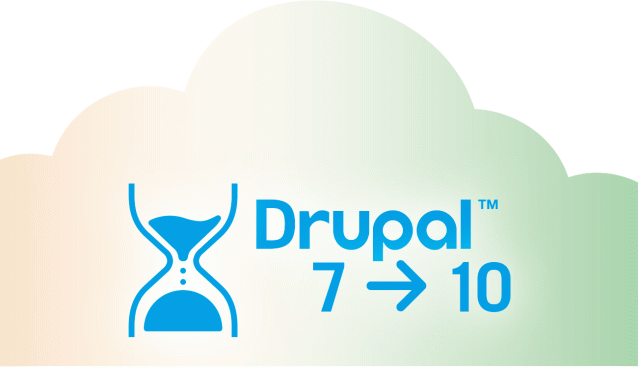blog
Navigating the Evolution: Upgrading from Drupal 7 to Drupal 10

The digital landscape is constantly evolving, and so is the technology that powers our websites. In the world of content management systems (CMS), Drupal has consistently stood out as a powerful and versatile platform. If you're currently running your website on Drupal 7, you're likely aware of the need to keep up with the latest features, security enhancements, and performance optimizations. In this article, we'll explore the journey of upgrading from Drupal 7 to the cutting-edge Drupal 10, highlighting the benefits, challenges, and best practices along the way.
Why Upgrade?
Drupal 7 has been a trusted workhorse for many websites, providing a stable foundation for content management and customization. However, as technology advances and security concerns grow, upgrading becomes a necessity rather than an option. Here's why upgrading to Drupal 10 makes sense:
Security Enhancements: Drupal 10 incorporates the latest security measures and patches, ensuring a safer environment for your website and its visitors.
Performance Improvements: With each release, Drupal focuses on optimizing performance. Drupal 10 is expected to deliver better speed and responsiveness, enhancing user experiences.
Modern Features: Drupal 10 introduces new features and functionalities that align with current web trends. Staying up-to-date allows you to provide modern experiences to your users.
Long-Term Support: Drupal 7's support officially ended, leaving websites vulnerable to security risks. Upgrading to Drupal 10 ensures Drupal's core code receives long-term support and updates.
Planning the Upgrade
The upgrade process requires careful planning to ensure a smooth transition. Here's a step-by-step approach:
Assessment: Evaluate your current website's structure, content, modules, and themes. Identify what needs to be updated, replaced, or rebuilt.
Backup: Create a full backup of your Drupal 7 site, including the database and all files. This ensures you have a safety net in case anything goes wrong during the upgrade process.
Module and Theme Compatibility: Check whether your existing modules and themes have been updated to support Drupal 10. If not, identify alternatives or plan to update them.
Content Migration: Develop a strategy for migrating your content to the new version. Content types, taxonomies, and media should all be considered.
Custom Code: If you have custom code, review it for compatibility with Drupal 10's APIs. You may need to refactor parts of your codebase.
Challenges and Considerations
While upgrading to Drupal 10 offers numerous benefits, there are challenges to be mindful of:
Module Compatibility: Some modules might not be available for Drupal 10 or might have undergone significant changes. You might need to find replacements or develop custom solutions.
Theme Overhaul: Themes from Drupal 7 will likely require significant adjustments to work with Drupal 10's newer architecture and theming practices.
Customization Adaptation: Any customizations made to your Drupal 7 site will need to be adapted to fit the new structure and features of Drupal 10.
Learning Curve: Your team might need time to familiarize themselves with Drupal 10's changes and enhancements.
Upgrading from Drupal 7 to Drupal 10 marks an important step in your website's evolution. While the process might involve challenges, the benefits of enhanced security, performance, and modern features make it a worthwhile endeavor. By carefully planning, testing, and seeking expert advice when necessary, you can ensure a successful transition that keeps your website at the forefront of digital innovation. Embrace the change, and unlock the full potential of Drupal 10 for your online presence.
Avatar New York Web Design is an award-winning, web design and development company specializing in website design, custom development, digital marketing, and managed web hosting.